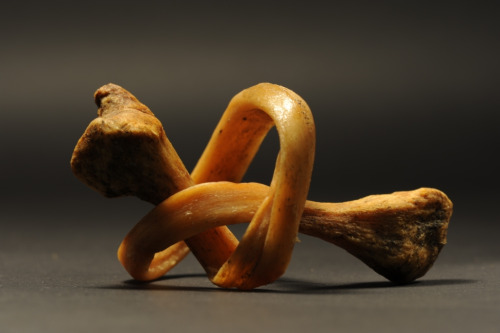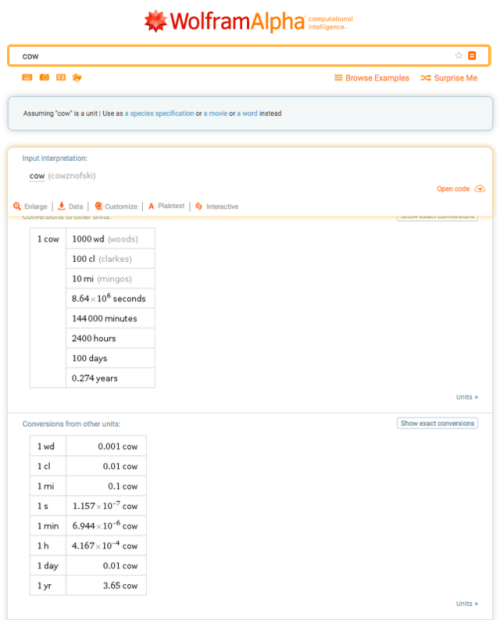Don’t Try This At Home!









Don’t try this at home!
I talked about the interesting structure of graphite (aka pencil lead) in our latest video:
But I didn’t have time to touch on one of the fascinating side effects of this structure - graphite’s conductivity. A single, two-dimensional sheet of graphite (known as graphene) is the most conductive material we know about. Diamond is among the least conductive materials we know about.
Impure graphite - like the stuff we find in pencils - is somewhere in between. It’s more conductive than sea water and less conductive than steel. As free electrons flow through it, it lights up like a filament and puts out a lot of heat.
Some risk-taking YouTubers (MausolfB Education and ElectroBoom) demonstrated this property so you don’t have to.
Diamond photo credit: Macroscopic Solutions, Graphite photo credit: DerHexer
More Posts from Sciencebloggin and Others

Quantum tunnelling
Tunneling is a quantum mechanical effect. A tunneling current occurs when electrons move through a barrier that they classically shouldn’t be able to move through. In classical terms, if you don’t have enough energy to move “over” a barrier, you won’t. However, in the quantum mechanical world, electrons have wavelike properties. These waves don’t end abruptly at a wall or barrier, but taper off quickly. If the barrier is thin enough, the probability function may extend into the next region, through the barrier! Because of the small probability of an electron being on the other side of the barrier, given enough electrons, some will indeed move through and appear on the other side. When an electron moves through the barrier in this fashion, it is called tunneling.

Quantum mechanics tells us that electrons have both wave and particle-like properties. Tunneling is an effect of the wavelike nature.

The top image shows us that when an electron (the wave) hits a barrier, the wave doesn’t abruptly end, but tapers off very quickly - exponentially. For a thick barrier, the wave doesn’t get past.
The bottom image shows the scenario if the barrier is quite thin (about a nanometer). Part of the wave does get through and therefore some electrons may appear on the other side of the barrier.
Because of the sharp decay of the probability function through the barrier, the number of electrons that will actually tunnel is very dependent upon the thickness of the barrier. The current through the barrier drops off exponentially with the barrier thickness
Source: nanoscience.com | Images: x | x | x

Pulling apart duct tape causes chemical bonds to break which indirectly gives rise to a faint blue glow in an effect called triboluminescence
Lava Flow in Leilani Estates, check out the speed
Sunset lights the bottom of the clouds, viewed from above.
nprovince101
Listen to the sound of wikipedia
This is a way to listen to changes to wikipedia. You are literally listening to knowledge being added to the world.
Pluck sounds are an addition, strings are subtractions, and the pitch says how how big the edit is. My heart shudders at this I love it so much.

We need to save our water from evaporation here in CA. We should be doing everything possible to store what rain we are lucky to get.

The mineral component of bone is comprised mostly of the calcium phosphate mineral hydroxyapatite which is embedded in the organic component type I collagen. When bone is exposed to a mildly acid environment the mineral component leaches out leaving only the pliable organic component. Vinegar is safe to use and does not destroy the protein scaffolding that gives bone it’s characteristic shape. This is a human fibula tied in a knot.

Computational intelligence cowculator to the rescue: https://wolfr.am/w0mzSVqa
Happy Cow Appreciation Day. We hope you have an udderly amazing day. #mooooood
-
 sciencebloggin reblogged this · 1 year ago
sciencebloggin reblogged this · 1 year ago -
 sporadicshepherdfriendbear reblogged this · 3 years ago
sporadicshepherdfriendbear reblogged this · 3 years ago -
 squeackygee liked this · 4 years ago
squeackygee liked this · 4 years ago -
 solely-02 liked this · 4 years ago
solely-02 liked this · 4 years ago -
 mrempathy61 liked this · 4 years ago
mrempathy61 liked this · 4 years ago -
 anderson7500 liked this · 4 years ago
anderson7500 liked this · 4 years ago -
 erysian reblogged this · 5 years ago
erysian reblogged this · 5 years ago -
 erysian liked this · 5 years ago
erysian liked this · 5 years ago -
 alexisntawkward liked this · 5 years ago
alexisntawkward liked this · 5 years ago -
 stevonnie-forever reblogged this · 6 years ago
stevonnie-forever reblogged this · 6 years ago -
 stevonnie-forever liked this · 6 years ago
stevonnie-forever liked this · 6 years ago -
 outlook990 liked this · 6 years ago
outlook990 liked this · 6 years ago -
 fiorefalinesti liked this · 6 years ago
fiorefalinesti liked this · 6 years ago -
 xhydralisk liked this · 6 years ago
xhydralisk liked this · 6 years ago -
 dauntlessdiva reblogged this · 6 years ago
dauntlessdiva reblogged this · 6 years ago -
 dauntlessdiva liked this · 6 years ago
dauntlessdiva liked this · 6 years ago -
 shadowwolfe-13 liked this · 6 years ago
shadowwolfe-13 liked this · 6 years ago -
 bease1977 liked this · 6 years ago
bease1977 liked this · 6 years ago -
 mom2ethanlogan reblogged this · 6 years ago
mom2ethanlogan reblogged this · 6 years ago -
 mom2ethanlogan liked this · 6 years ago
mom2ethanlogan liked this · 6 years ago -
 machet-t-omniversal liked this · 6 years ago
machet-t-omniversal liked this · 6 years ago -
 new-outset liked this · 6 years ago
new-outset liked this · 6 years ago -
 babu-r-itsme-blog liked this · 6 years ago
babu-r-itsme-blog liked this · 6 years ago -
 thelittlenessie liked this · 6 years ago
thelittlenessie liked this · 6 years ago -
 megxolotl liked this · 6 years ago
megxolotl liked this · 6 years ago -
 raini-ragnaroek liked this · 6 years ago
raini-ragnaroek liked this · 6 years ago -
 wanderer001 liked this · 6 years ago
wanderer001 liked this · 6 years ago -
 winningmushroom reblogged this · 6 years ago
winningmushroom reblogged this · 6 years ago -
 redhousehead reblogged this · 6 years ago
redhousehead reblogged this · 6 years ago -
 redhousehead liked this · 6 years ago
redhousehead liked this · 6 years ago -
 xstarfirekory reblogged this · 6 years ago
xstarfirekory reblogged this · 6 years ago -
 woahdudecoolboat liked this · 6 years ago
woahdudecoolboat liked this · 6 years ago -
 aconstantallegory liked this · 6 years ago
aconstantallegory liked this · 6 years ago -
 jojolimons liked this · 6 years ago
jojolimons liked this · 6 years ago -
 krollearning reblogged this · 6 years ago
krollearning reblogged this · 6 years ago -
 butwithglasses reblogged this · 7 years ago
butwithglasses reblogged this · 7 years ago -
 stephennnn311-blog liked this · 7 years ago
stephennnn311-blog liked this · 7 years ago -
 asenseofnicethings liked this · 7 years ago
asenseofnicethings liked this · 7 years ago -
 neuronium reblogged this · 7 years ago
neuronium reblogged this · 7 years ago -
 the3st reblogged this · 7 years ago
the3st reblogged this · 7 years ago -
 hemikym reblogged this · 7 years ago
hemikym reblogged this · 7 years ago
